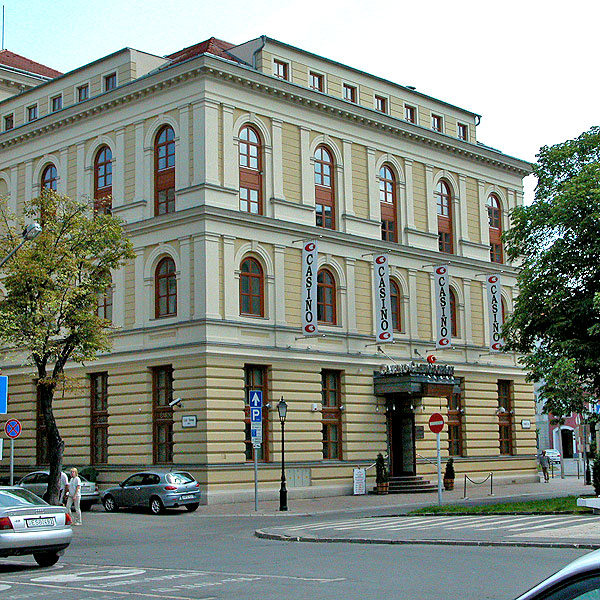 |
Fabricius House
Sopron, Fő tér 6.
One of the most interesting features of the building is the Roman bath discovered by archeologists in the basement of the building. Back in the 16th century, there were two buildings on the plot; the one at the back had two stories. The Gothic hall is a wonderful piece of architecture, but the loggia in the courtyard and the Gothic and Baroque cellars of the rear building also deserve special attention. The owners of the building were always rich citizens and traders with high ranking social positions. The house is named after one of the owners, mayor and magistrate Endre Fabricius, who purchased the house in 1806. He was a friend of the poet Sándor Petőfi, who changed his clothes in this house after escaping from his barracks to attend the concert of Franz Liszt. The building hosts three exhibitions.
The cellar hides remains from Scarbantia, the Roman town: headstones, altar stones, statues, sepulchral urns of stone, and sarcophagi. But what can these boring stones tell us about Roman times? For the interested visitor they begin speaking. A whole life can be gathered by reading the notes of a headstone. The oldest item of the collection is a piece of Marcus Vibius’ headstone (found in 1541); the lower part of it was destroyed during the fire of 1676. The city council found it very important to preserve this precious relic, so the original text on the stone is perfectly legible, although the copy is far from being an accurate replica. The impressive hall of the medieval cellar is a worthy environment to accommodate the several meter high sculptures of the Capitolium Gods. The sanctuary of the great marble statues of Jupiter, Juno, and Minerva, which are fascinating even in their torso form, originally stood on the forum of Scarbantia. The richly ornamented marble headstone of Casius Sexilius Senecio and the relief from the altar of the Mithras Sanctuary are also exceptionally valuable.
The archeological exhibition "Three-thousand years on the amber road" can be seen on two floors at the back of the building. The rich findings demonstrate the life and culture of the former Illyrian, Celtic and Roman populations of the area, the way of life of the conquering Hungarians, as well as the process of Sopron becoming an important town. There is also a world famous find from the early Iron Age - the Sun Disk. The original function of the disk is still unknown. It is worth visiting the Illyrians’ sepulchral urns decorated with black runic scripts, the firedogs, and the Celts’ coins and jewels. The amber jewels and the gold and silver objects for everyday use demonstrate the unbelievable richness of the Roman period. The most valuable piece of the migration period is the Cunpald Goblet, with its estimated age of 1,200 years.
The rooms on the first and second floors of the front building show the changes in interior design between the 17th and 18th centuries, by presenting objects and furniture of the time. We can witness the shift from more puritan pieces of furniture to more decorative items.
